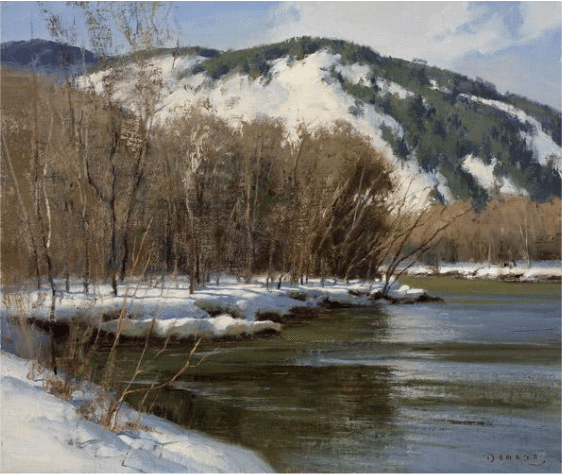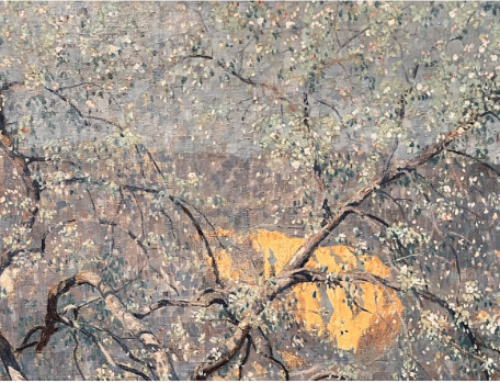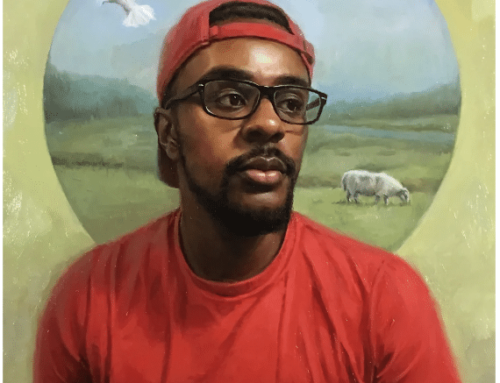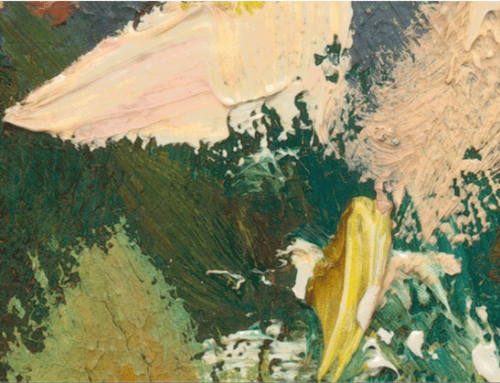Something to Get You Thinking
All Good Painting Have These 3 Things in Common:
1. good painting evokes a visceral and emotional response. People still want and need this from art, and it’s the work that does this best that sells the most.
(To be clear, the idea is not that all art has to pull on your heart strings or “say something” deep or political or “provoke the viewer” – it’s simply that the strongest paintings offer the audience something other than proficient skill. Technique, while essential, is a means, not an end. That said, on to #2, – technique!)
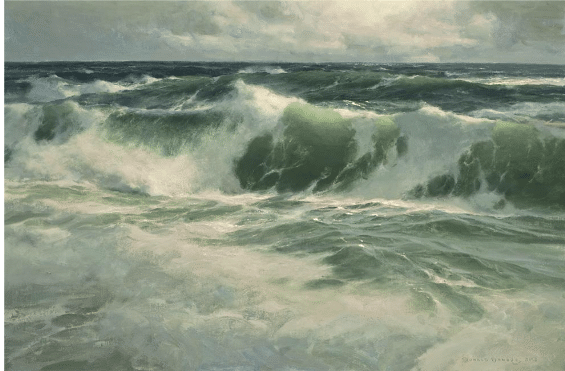
Donald Demers, Over the Undertow, oil, 24×36 in.
2. A good painting has sound technique. That can be boiled down into three categories: Drawing, Color, and Values. If your painting isn’t working (or if you can’t tell if it’s working or not), go through each one separately – composition, color, and values – and figure out how you could tweak it, ideally to better support #1.
3. Design, design, design. Also known as composition, design could almost be the answer for all three numbers in this list. Paintings live or die based on their underlying architecture. And the best paintings do not mechanically apply formulaic compositions, but rather use strong design as an aspect of technique (#2) and the expression of content (#1).
One Painting and a Quote to Inspire You
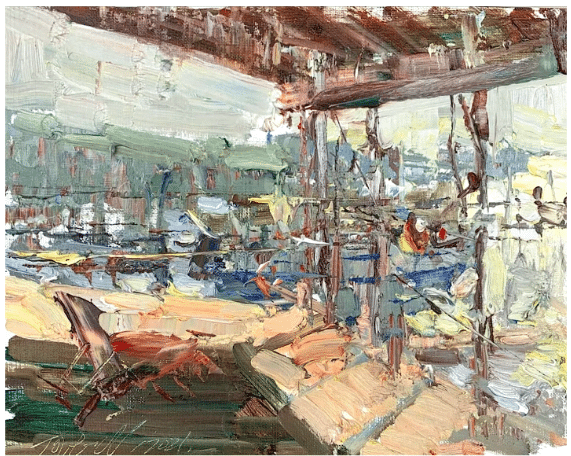
Jove Wang, Pasadena Harbor, oil, 11 x 14 in. It’s like the light is so strong and bright in this beachside scene that the forms themselves are getting lost in it.
If you hear a voice within you say, ‘you cannot paint,’ then by all means paint, and that voice will be silenced. – Vincent van Gogh
One Thing to Try This Week
Try a Painting Using Your Non-Dominant Hand
We all sometimes get stuck because of misplaced perfectionism. Painting with your non-dominant hand is a great way to shake off tendencies to self-sabotage and self-consciousness that can stand in the way of your painting.
You might find that not only will you kick perfectionism to the curb, you’ll be freer to explore expressive painting and the secondary (non-representational) aspects of the medium (like texture as well as color and value for their own, expressive sake apart from accuracy and “getting it right.”). Take it slow and note how if it changes the way you relate to or think about painting.
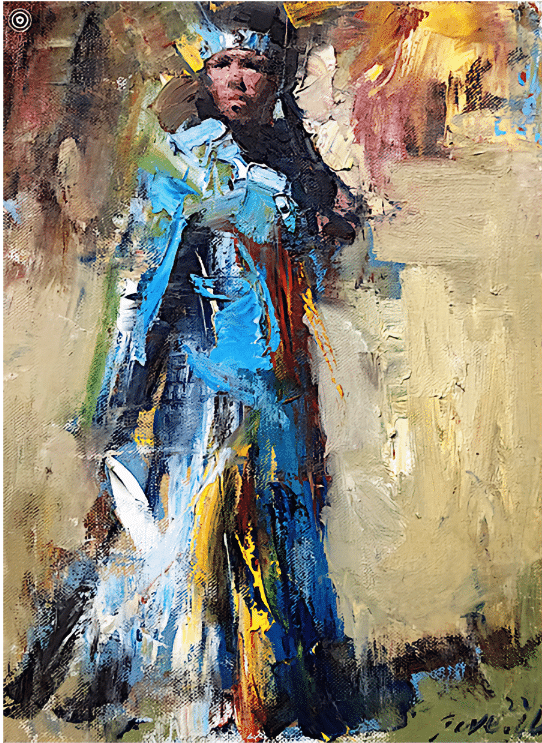
Jove Wang, Indian Girl, oil, 18×24 in.
Jove Wang showcases his impassioned work in a sumptuous treasure trove of a book, Emphasizing Instinct and Feeling.
Jove Wang’s also got a video on painting the city, Expressive Cityscapes.
Finally, Donald Demers shares his technique for painting the seascape in his video Mastering the Sea.
When Painting Goes Where Language Ends: Lucian Freud Collection in NYC
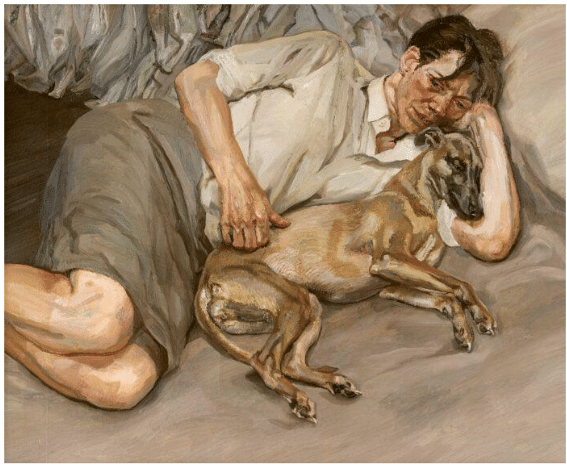
Lucian Freud, Double Portrait, 1988-90, Oil on canvas, 95.2 x 116.7 x 3 cm (37 1/2 x 45 15/16 x 1 3/16 in) UBS Art Collection © The Lucian Freud Archive. All Rights Reserved 2024 / Bridgeman Images
Most critics consider Lucien Freud the greatest portrait and figure painter of the latter half of the 20th century. Freud always painted from life, often over many sittings, capturing elusive, deeply insightful truths that our eyes recognize but that words cannot express. His brush arguably approached more primal human content, more raw, essential, hard-won truth of age, individuality, mortality, psychology, and personhood, than any artist since Rembrandt.
The UBS Art Collection has opened an exhibition of etchings and paintings by the acclaimed British artist at the UBS Art Gallery in New York. The exhibition brings together 45 exemplary works by Lucian Freud and marks the first time this group has been displayed in the United States or anywhere outside of a museum setting.
The UBS Art Gallery is a public art space that provides an opportunity to discover works from the UBS Art Collection. Located in the lobby of UBS’s New York headquarters at 1285 Avenue of the Americas, the exhibition is free and open to the public Monday through Friday, 7:00 am to 6:00 pm, through the Spring of 2024 (contact before you go to confirm dates).
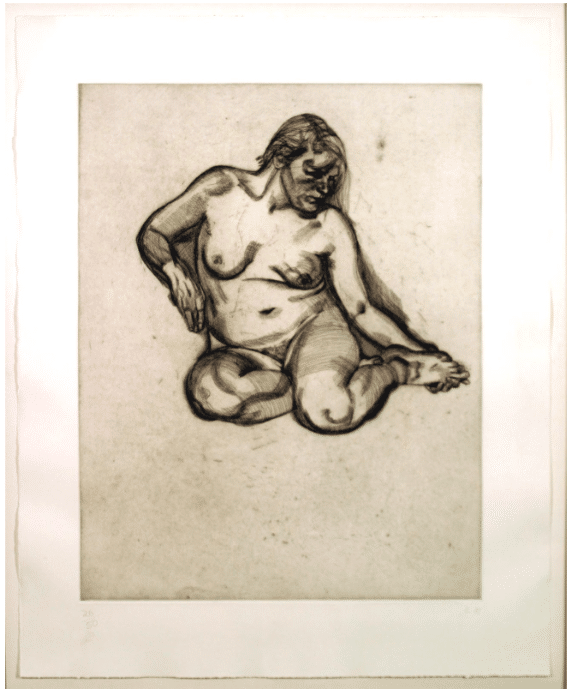
Lucian Freud, Girl Holding Her Foot, 1985, Etching, 88.3 x 71 cm, UBS Art Collection © The Lucian Freud Archive. All Rights Reserved 2024 / Bridgeman Images
More from the organizers:
Lucian Freud is considered one of the most distinguished artists of the last century and the greatest portraitist of his time. His works are known for their psychological penetration and unsparing realism, which redefined public understanding of portraiture.
In addition to a large body of the artist’s late etchings encompassing landscapes, portraits, and nudes, the exhibition will also feature two compelling oil paintings—Double Portrait (1988–90) and Head of a Naked Girl (1999)—that are representative of his expressive style.
“We are pleased to share with the public this exceptional body of work, which defies perceived norms of corporate collecting,” said Mary Rozell, Global Head of the UBS Art Collection. “Like most of Freud’s oeuvre, the artworks on display are uncompromising and challenging to view, and we hope they will spark both conversation and introspection.”
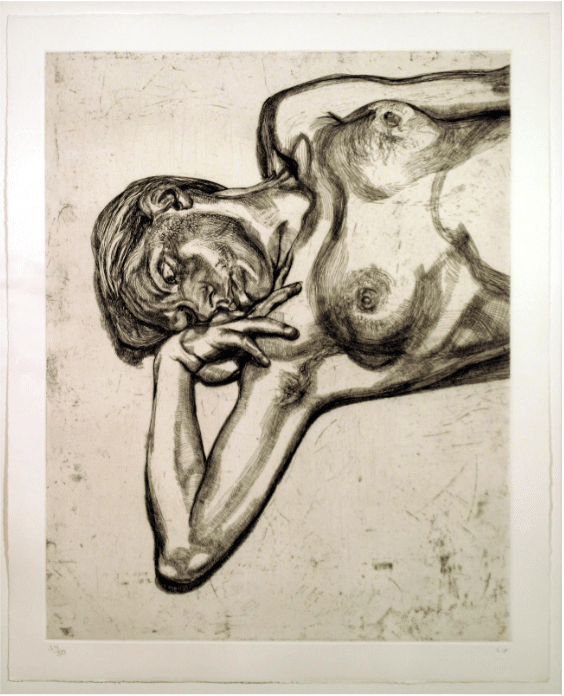
Lucian Freud, Head and Shoulders of a Girl, 1990, Etching, 77 x 63 cm (30 5/16 x 24 13/16 in), UBS Art Collection © The Lucian Freud Archive. All Rights Reserved 2024 / Bridgeman Images
The UBS Art Collection is one of the world’s most significant corporate collections of contemporary art with over 30,000 artworks by influential artists of our time, including more than 50 works by Freud. These works were the subject of dedicated museum exhibitions at renowned international institutions, the Louisiana Museum of Modern Art, Humlebaek (2017) and the Martin-Gropius-Bau, Berlin (2015).
Born in Berlin in 1922, Freud was the grandson of Sigmund Freud, the founder of psychoanalysis. At the age of ten, his family immigrated to London to escape the forces of National Socialism and Freud became a British subject in 1939.
He studied briefly at the Central School of Art, then went on to attend the East Anglian School of Painting and Goldsmith’s College. While his early work is influenced by German painters and even Surrealism, by 1960 Freud settled into his own distinctive style. He was a key figure in the School of London, a group who pursued a unique form of figuration, even as conceptual art and minimal art dominated the scene.
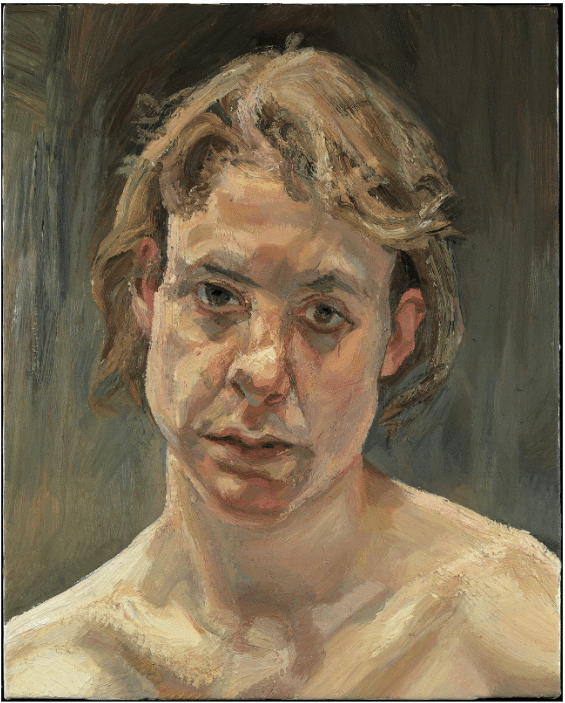
Lucian Freud, Head of a Naked Girl, 1999, Oil on canvas, 50.7 x 40.5 cm 20 1/4 x 16″, UBS Art Collection © The Lucian Freud Archive. All Rights Reserved 2024 / Bridgeman Images
While Freud has been most widely recognized as a painter, etchings are an integral part of his practice. The etchings on display span an 18-year period from 1982 to 2000, a prolific phase in Freud’s graphic work. The artist’s process was as unorthodox as his approach to his subjects; Freud would position the copper etching plate upright on an easel, like a canvas, creating his impressions while standing.
While the subjects of his prints often relate to certain paintings, the etchings were not derivative but created from life during extended sittings. His etchings are thus as intimate as his paintings, their linear constructions and croppings only heightening the sense of inherent tension. Presented alongside a substantial number of his works as context, these pieces inspire introspection.
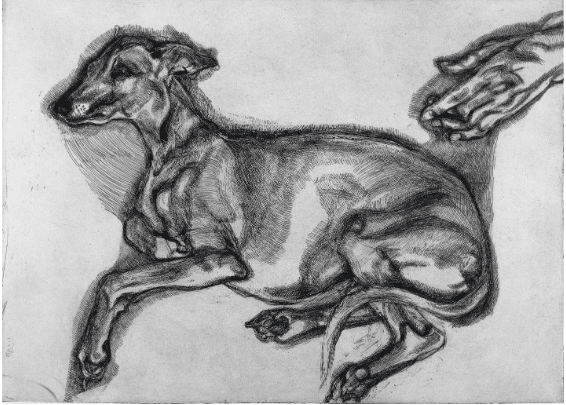
Lucian Freud, Pluto Aged Twelve, 2000, Etching on somerset textured white Paper, 57.1 x 72.3 cm, UBS Art Collection © The Lucian Freud Archive. All Rights Reserved 2024 / Bridgeman Images
A catalogue documenting the full slate of works by Freud in the UBS Art Collection titled Lucian Freud: Closer. UBS Art Collection, was published in 2017 and is available at bookstores and online retailers.
For more information, please visit ubs.com/global/en/our-firm/art/ubs-art-gallery.

